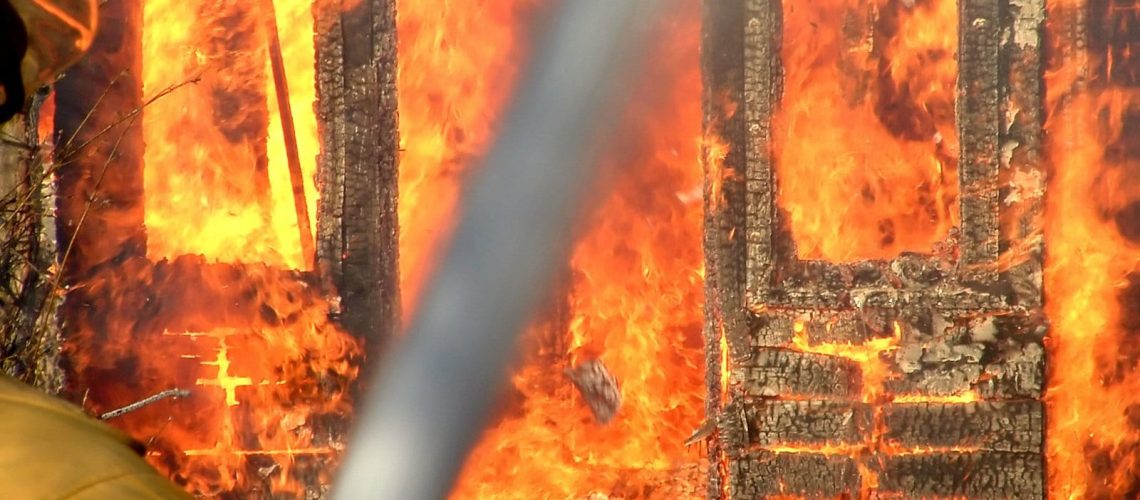Fire statistics in the U.S. are frightening, to say the least. The numbers seem to get worse each year, making fires an awful reality to those of us living in North America.
In this post, we wanted to put together a list of important fire statistics to help homeowners become more aware of things like: what causes fires, what rooms are most likely to be fire-prone, and how smoke detectors can help save lives.
Above all, we hope these statistics will help you take the necessary precautions and safety measures when it comes to fire safety in your home to keep your property and your family safe.
House Fire Statistics in the USA
According to the National Fire Protection Association (NFPA), National Fire Danger Rating System, Federal Emergency Management Agency (FEMA), and the Department of Homeland Security, the following statistics have been released:
- Over a five-year period, house fires caused 2,620 deaths and $6.9 billion in property damage (NFPA).
- In 2018, it was recorded that for every 1,000 fires (NFDR), a national average of 2.5 deaths and 9.8 injuries occurred.
- It takes only 30 seconds for a small flame to turn into a major blaze (Department of Homeland Security).
- Around 358,500 homes experience a structural fire each year (NFPA).
Did You Know?
On top of the fire stats above, here are some more fire facts to consider:
- The top three causes of residential fires are cooking, heating equipment, and electrical malfunctions.
- A house fire occurs every 87 seconds.
- The peak day for cooking fires is Thanksgiving.
- Each year, over 18,000 fires are started due to fireworks.
- In less than five minutes, the heat from a house fire can reach over 1,100 degrees Fahrenheit
- During the fall months, 45% of home fires occur because Americans are using their fireplaces to keep warm.
- A staggering 96% of all homes in the United States have had some form of fire or smoke-related damage.
Fire Safety of the Average American Citizen
In 2020, The Zebra “surveyed 1,500 Americans to gain insight into the basic fire safety knowledge and practices of the average US citizen.” Fortunately, the survey found that “most Americans are aware of proper fire prevention procedures and have followed the correct steps in protecting their homes from a potential fire.”
Some of these steps and safety procedures include:
- Almost half of the respondents put their fire pit at least 30 feet away from their home or any flammable objects — the recommended distance is only 10 feet.
- An encouraging 70.3% of respondents own or have access to a fire extinguisher.
- 56.5% of people know to put a carbon monoxide detector on every floor of their home.
- 32.1% of the participants correctly identified that you should have a smoke alarm in every room and every floor of your home. However, 31.7% believe you only need one detector on every floor.
- 4.7% of people believe that you only need one smoke detector for your entire house.
While many people practice fire safety habits, others are still unaware of the potential dangers of a house fire and other methods of fire prevention. Some of these worrying stats include:
- Over two-thirds of respondents (67.7%) did not know that cooking was the leading cause of house fires.
- 31.2% were unaware that wildfire damage is not usually covered in a homeowners insurance policy.
- Almost one-fifth of the participants did not have a fire evacuation plan for their homes.
Important Fire Safety Tips
To be as fire-safe as possible, be sure to follow these important safety tips:
- If you use space heaters or any other portable heaters, be sure to keep these heaters at least 3 feet away from any flammable objects, such as blankets, curtains, or laundry.
- Space heaters should also be kept on tile or ceramic flooring — away from any combustible surfaces such as carpet or a floor rug.
- Consider choosing a space heater that automatically switches off if it falls over.
- Be sure to extinguish all the embers in a fireplace and any candle flames when you leave the room.
- It is crucial to install a fire alarm in every room and every floor of your home. Also, install a carbon monoxide detector on every floor of your home. Most importantly, test all devices regularly and replace batteries as needed.
- Make sure you and your family members know how to use a fire extinguisher correctly! Be sure to use the following PASS acronym:P: Pull the pin
A: Aim low at the base of the fire
S: Squeeze the handle slowly
S: Sweep the nozzle side to side - With an estimated 358,500 home fires taking place each year, 50% of the fires start in the kitchen, 7% start in the bedroom, 6% were chimney fires, 4% start in the living room, and 3% start in the laundry room.
- Fires caused 41% of home fire deaths in homes with no smoke alarms and 16% with smoke alarms that failed to operate.
- The risk of dying in home fires is 55% lower in properties with working smoke alarms than in homes with no alarms or that had smoke alarms that did not work.
Restoration 1 is Here to Help
If you ever find yourself in the unfortunate position of facing fire or smoke damage, trust our experts at Restoration 1. Our highly trained and certified team will be able to restore your property quickly and efficiently to its pre-damaged state. We understand how awful and devastating a house fire can be. By partnering with us, rest assured your property restoration is in the right, capable hands.


